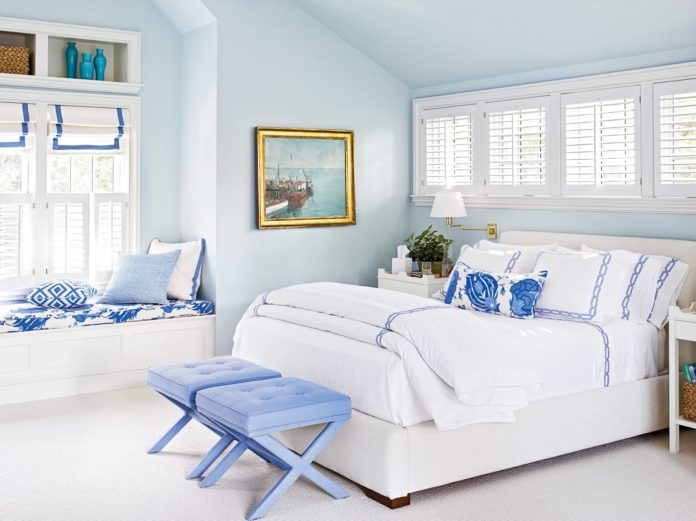When you hear the phrase “lights out,” you know it’s time to go to bed. However, leaving lights on can interfere with sleep, but some studies have shown that turning on certain colored lights, like yellow, can help you fall asleep.
Besides night lights, bedroom colors, like the wall color, can also affect your sleep. Have you ever wondered how?
Because color may affect your mood, being surrounded by the wrong colors during bedtime can affect your sleep quality.
Read on to find out exactly how the color of your bedroom walls affects your sleep, and which ones you should follow to get the best sleep every night.
Also Read: Improve Your Health! Get Less Blue Light
What colors help you sleep?
You paint your walls for aesthetic appeal, but the color you choose can affect you psychologically, including your ability to sleep. Some colors evoke relaxation, while others stimulate your mind and make you more awake.
In general, muted colors work best for bedroom walls, with blues, greens, and yellows being the most effective.
1. Blue
Blue is probably the best color for your bedroom. A 2018 study of blue walls in college dorms found that shades of blue have not only a calming effect but also a soothing effect on the brain.
All shades of blue can evoke a peaceful atmosphere, but keep your bedroom walls in light tones for the best effect.
2. Green
Green is associated with nature and relaxes us. For many people, green is also a harmonious and refreshing color.
3. Yellow
Yellow isn’t always sleep-inducing, but waking up in a yellow bedroom can help because of the color’s cheerful connotations. As with blues and greens, choose light shades that won’t interfere with sleep.
4. Others- Beige
Some earth tones can work well for bedroom walls as long as they are not too dark. Other options include beige and soft white. Silver is another alternative that can create a more peaceful atmosphere that can promote better sleep.
Whichever color you choose, the paint finish is just as important to the quality of your sleep. Too shiny a finish can reflect light and stimulate your brain, so opt for something flat or matte.
What are the worst room colors for sleep?
Generally, too bright colors should be avoided in the bedroom. These include bright reds and oranges, which are considered energetic and uplifting colors.
A 2014 study found that red enhances fighting instinct and increases alertness and awareness of surroundings.
Hot pinks, neon pinks, and purples can also be too stimulating when you’re curling up to sleep. Dark grays and browns are not recommended as they can cause feelings of anxiety.
If you want brighter colors, consider a dimmer version. For example, you can replace bright purple with lavender or firefighter red with a soft salmon hue.
Depending on the design of your home, you may be able to incorporate brighter colors into other rooms in your home. Consider stocking more energetic colors in your home office or kid’s playroom.
Also Read: Infographic: Calming Colors for the Ultimate Zen Home
Other bedroom factors that affect the sleep
If you turn off the lights in your bedroom, depending on how dark your walls are, you may not be able to see the color of the walls and will be less likely to notice the effect.
Here are some ways to create a bedroom that’s nice to sleep in.
- Blackout curtains can be installed to block out morning sunlight and light from street lamps.
- Install a dimmer switch that you can turn on when you start to rest.
- Keep your thermostat low.
- Get several layers of bedding, such as a top sheet, comforter, and extra blanket.
- Use more subdued color accents and embellishments.
- Create white noise with a fan or phone app.
Some aspects of your bedroom may not be conducive to sleep. Keep the following items away from your bedroom for a better night’s sleep.
- Cell phones, tablets, and laptops that emit blue light that suppresses melatonin
- TV
- Food
Before choosing a color that brightens your room, consider that light, muted colors are best for your bedroom. Studies show that your sleep may depend on it.




